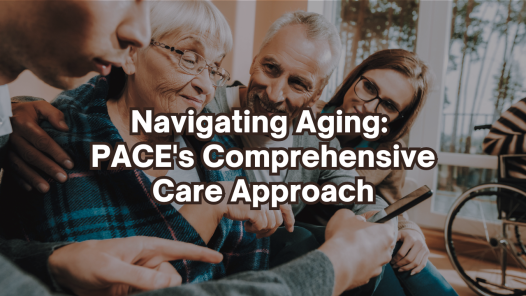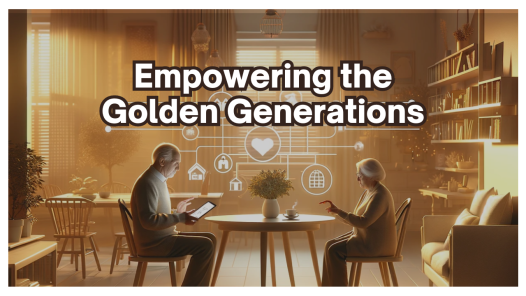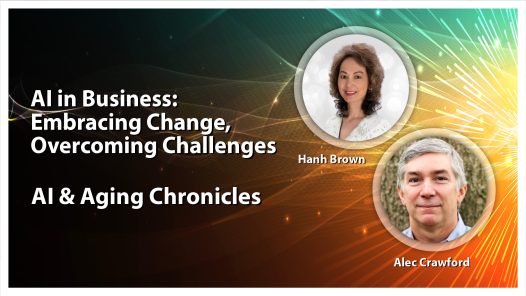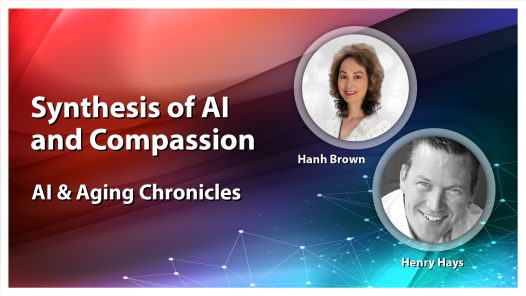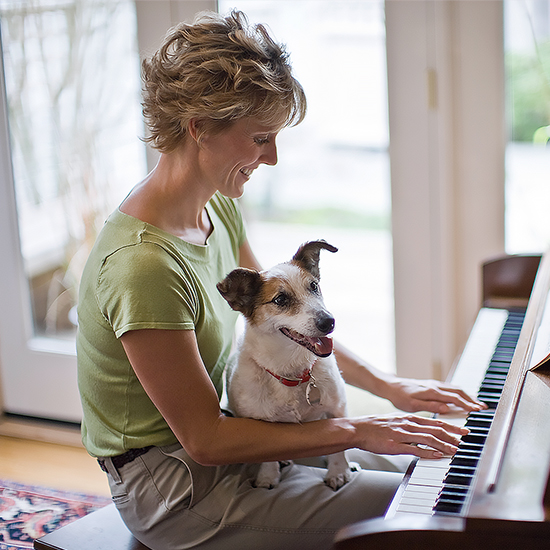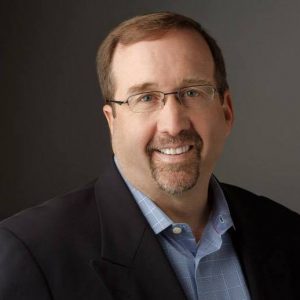
Today my guest is Rocky Goins. He has rich development and construction experience ranging from commercial/retail, mix-use and senior living development. After serving his country as a Naval Officer in the Civil Engineer Corps/Seabees, Rocky developed multiple grocery store (Publix, Winn-Dixie and Kash-n-Karry) retail centers. With the Rouse company, Rocky enjoyed master-planning town centers, retail construction, and was the senior project manager for the Faneuil Hall Marketplace (Boston) renovation.
Rocky entered the Senior Living Industry in 2002, and advanced rapidly at Sunrise Senior Living until the recession stopped their entire development efforts. During the recession, Rocky worked with two major non-for-profit CCRC’s with their development plans until he settled his family in Tulsa, OK with Senior Star/HCN to lead their expansion/renovation efforts.
Community minded, Rocky volunteers in leadership positions in several charities effectively advancing their initiatives.
Please join us today as we dive into his heart driving senior living development.
Hanh Brown: [00:00:00] Today, my guest is Rocky Goins. Rocky has a rich development and construction experience ranging from commercial retail mixed use and senior living development. After serving his country as a Naval officer in the civil engineers court, Rocky developed multiple grocery store, including Publix Winn-Dixie and cash and carry retail centers.
[00:01:36] Rocky entered the senior living industry in 2002 in advance rapidly as sunrise, senior living Rocky work with two major non-for-profits CCRC with their development plans. He then settled his family in Tulsa, Oklahoma with senior star living there. He led their expansion and renovation efforts. [00:01:57] Community-minded Rocky volunteers in leadership positions in several charities effectively advancing their initiatives. Rocky loves and is proud of his wife and his two daughters. Well, hi, Rocky, how are you?Rocky Goins: [00:02:10] Well, thanks for having me here. It’s a great opportunity to talk with you about the senior living industry.
Hanh Brown: [00:02:17] So please share with us your journey and how you got started into real estate development. And then to senior living development.
Rocky Goins: [00:02:25] it’s really a fascinating industry. I started out going to school 40 years ago, yesterday. I was sworn in to the U S Naval Academy. A lot of emails been popping up from colleagues, remind me of that fact, and I never had any imagination.
[00:02:39] Then that would get involved with senior living at that juncture. I thought I’d have a career in the Navy, but after my commitment with the Navy were time loved. I joined working for my father in commercial real estate. Building shopping centers in the state of Florida. After doing that for many years, it was a great education. [00:02:59] I decided to branch off and go in with the Rouse company up in Columbia, Maryland was run by two West pointers that wanted to pick on me. And, uh, we had a lot of fun and building a lot of communities learned a lot from that experience. And then when the Rouse company was being sold to general growth, I didn’t want to move to Chicago that which was offered to me. [00:03:22] And I decided to meet Erickson retirement communities, which was also based in Baltimore. And I got through the gate of Charleston community, which is a huge over 1,500 residents. Uh, with the gate and I thought, I’m not going to do this. I want to stick to building street. So I called him up on my cell phone and they said, where are you? [00:03:43] I said, well, I’m at your gate. And they said, well, come on in anyway, we’ll buy you lunch. You’re here. Anyway. So they were so smart. They brought me in, they showed me around to their beautiful community. I sat down with a bunch of seniors, threw us out one staff person at the table. And here I was interacting with seniors. [00:04:03] There’s one lady in particular captured my heart and she was telling me her story where her husband passed away, who she’s been married for over 50, 60 years. And she just wanted to go with him. And she did not want to live alone. She missed him dearly and winter time. It was hard to keep up for their house and she just wanted to pass away. [00:04:26] And when she hung up the phone with her grandkids on Sunday, she just went into depression and they convinced her to move into the senior living community. And she loved it. I mean, she was such a bright star. She knew all that waiters or waitresses names and knew everybody. And when she was a class, a personality, she leaned forward to me and she goes, you know, you should use the talents that you’ve learned over the years and apply that in a way that really impacts people’s lives. [00:04:54] So that night I just walked around the house, thinking about it, pacing about it. And that’s why I was like, I told him my family, I’m going to make the big jump from retail to senior living development. And I haven’t looked back. I mean, just it’s been a great ride and a great journey. I’ve been blessed to have worked for some great companies, Eric and he’s taught me a lot about senior living. [00:05:14] They have a different model. I was an entry fee model for a large senior living community. So we’re 1500 residents. They moved me to Florida. And they wanted to build in Florida. I picked up a large 60 acre track. In Palm beach County and the large 60 acre track and Broward County. And they’ve been looking for years trying to penetrate that market. [00:05:38] So I was able to do that, but then that summer we had three hurricanes hit South Florida and there’s surf carriers and not going to cover yet. And so they decided they didn’t want to be informed. And I decided I liked Florida with my family. I didn’t want to move again. So I joined sunrise living and I say, Paul Clawson and the cost, the family. [00:05:59] Really were the forefathers of senior living in America. I mean, they were pulling the Denmark model and bringing it to United States. They toured the skilled nurse care, trying to find a place for their family. And there was this appall about the conditions. So there are mansion products. Well, it’s really novel idea at that time. [00:06:17] And so I really enjoyed getting to know Paul and Terry and understanding the culture of sunrise. So working with them and I’m moved up the ranks to satirize fairly quickly, had a great team working with them and development team construction theme. Of course, Billy Shields who headed that development remains a mentor of mine. [00:06:37] And then when the recession hit. We went from a 60 person wallet to basically a two or three person development team was really emotional because we really thanks to Billy’s share, feel like a family. And so that was rough. And so I was a senior vice president construction for sunrise, Haley and construction projects throughout Canada and United States. [00:06:59] And I was also the senior vice president development for the SAC. So we’ll have my foot on both sides. At the same time of their construction development platform. I really learned a lot to that program. Really got to know a lot of people because we scattered all over the industry. And so as a result, I really enjoy going to conferences, connecting with my friends. [00:07:22] So from there, I got to be in consulting, working with a marketing, the group, helping non for profit CCRS versus another different type of platforms and what I’ve dealt with before. I did that for a couple of years. I was away from home Monday through Friday, and that got to be something that was not good for my family. [00:07:41] So I decided to leave that and we’ll go back into private doing SIS living memory care with another company. And so that’s part of my journey. Now I moved in Tulsa, Oklahoma. And when we got out of the recession, I didn’t want to move again. My wife has deep roots in Tulsa, and so I couldn’t get out of this town. [00:07:59] And so I love the city. I love Tulsa level, Oklahoma though. I never imagined now there would be in senior living when I was 22 years old. I never imagined I’d be living in Oklahoma, but it’s all good, you know, not as the greatest senior and it’s all for his glory. So. Would that being said, I got to form my own company and I posted on LinkedIn. [00:08:19] I was starting my own company and it’s been great ever since I’ve had to be very selective with my clients. Really espouse good culture. And so through that journey, I’ve learned a lot about Sierra and loving, and I just have a huge admiration for the leaders who started our industry in this country, not too long ago. [00:08:38] And how so many of the executives in our industry have a heart for what they’re doing. It really is a mission focused industry, taking care of the seniors, providing the best environment possible. And I really liked being a part of that.Hanh Brown: [00:08:52] I agree. It is a privilege. You know, I believe that you’re not only providing a home for the baby boomers.
[00:08:58] You’re also upholding the heritage they come with. They have built their lives up until let’s say in their mid eighties. And now they have to be uprooted from their home, their loved ones. And they are entrusting in you not only to provide a home, but also their overall wellbeing and how they’re going to sign up and the later quarter of their life. [00:09:21] So it is a heavy responsibility to uphold a heritage.Rocky Goins: [00:09:26] Absolutely.
Hanh Brown: [00:09:27] It is a blessing. So what brings the most value for a successful development project?
Rocky Goins: [00:09:35] I get asked that quite a bit. It really is the people who work there now, how you care for the residents, giving them the quality of life. That is what I think brings the value to it.
[00:09:48] I mean, if they’re feeling loved this residence, building love, the associates employees are feeling loved by the company that brings a very nurturing culture to their community. And that really does is Fallows the happiness enjoy. It is great to know that people who live in similar communities do tend to live longer than the people outside the community. [00:10:10] I think people by design need to have other people caring for them and having a chance to care for others, stimulates purpose in life. And I think senior living community that’s properly managed can do that. And so I enjoy working for operators that know that and understand that.Hanh Brown: [00:10:28] Yes. We’re not only caring for the elderly, but we also need to cultivate the culture to care for the staff so that they can be at their best to care for the residents.
[00:10:39] Absolutely. And that’s a vast undertaking, just like what you said. Good operators will understand that. So let’s say the development construction or the community. So, what do you look for in a site selection?Rocky Goins: [00:10:53] Oh, that’s a great question. That answer varies depending on who the company is and what the product is that you’re trying to build.
[00:11:00] One thing I’ve learned in this journey is that if you build it, they will come. It’s not the case. You have to be very thoughtful in what you’re looking for for a site. And there’s a difference between those who are looking to be subsidized by state funds versus those who are private pay for private pay. [00:11:17] I do reject the idea that, you know, you want to go behind Walmart. Walmart’s a great store. You’re trying to find the cheapest land possible gives you the opportunity to being outflanked. And I guess being a former Naval officer, I don’t like to be outflanked, I’ve found that they’re very successful products. [00:11:36] Are ones that are in the way of a daily travel. Meaning if you have visibility on a good road, when the older a daughter realizes I gotta move my mom or dad, or both to a senior living community, they will drive into your community and visit. At that point, you’re setting the benchmark. The other competitors are going to have to beat you. [00:11:56] And it’s showing their culture. That’s a big deal. If you do it right. And show them the hospitality of the community, you’re going to be a hard community to be too. Is that it also allows for more visits from your family, if you’re along the way to the day that gives her going to the grocery store, or what have you, you attended one to visit your mom or dad more often that really does increase her quality of life, as opposed to being way out the edge of town in the meadow that doesn’t work as well. [00:12:26] The senior wants to be connected to their family and their friends. And so I like. Being near where the activity is and gives them a chance to go be part of that activity, but also gives them a chance to be visited by others a more frequent basis.Hanh Brown: [00:12:41] Yes. I agree. When my family was looking for a place where my mom, one of the critical criteria was the location in the length of time that it would take for my siblings to drive to the place.
[00:12:54] So we had to consider how long from my siblings work to my mom’s new home. We have to look at how practical and feasible it would be to drive every day. And we put all those activities on the calendar so that she would not be without family every day. So location and the length of time to get there. At least for us was huge. [00:13:13] Nobody wants to be there out of nowhere and not having access to restaurants and stores. I mean, family still wants to take their loved ones to restaurants, theaters, and so forth.Rocky Goins: [00:13:24] I like to add to that. If I may, there was a great case study that we had at sunrise, where every operator has a formula. If you will, what they’re looking for when they’re studying them breath and where are they going to place them?
[00:13:35] And a lot of people are focused on how many seniors live in that area. There was a town that we looked at called Cinco ranch. Texas where the rest of the senior living communities there. And there was no hardly any seniors at all there, but there was a plethora of adult caregivers. It was initially presented to me by the regional operations manager. [00:13:57] I went to go visit it and fell in love with that plan. Community thought was wonderful. Found a great site. And I went to the executive committee and I found that the regional operational manager didn’t pull back on the support. So there’s no seniors there and that’s not the model for our company. We have to have seniors and I argued, that’s not the case. [00:14:15] If we have lack of competition, we have a lot of adult caregivers. This is in my opinion for ground. And I won by a split vote executive committee. I was mopping the sweat off my forehead and we agreed to do it. And we built it. It was a beautiful one-story cottage program, uh, assisted living memory care. [00:14:33] And by the time we had the thing built, we had a deposit in every room. Uh, really unprecedented for us. And all of a sudden that made us, made me it made the company rethink. What is it that we look for in a city or marketplace in sight that triggers a healthy growth community. And so caregivers matter.Hanh Brown: [00:14:56] Yes there comes a point that the loved one may need more than a caregiver, perhaps 24 seven care.
[00:15:03] And that’s what happened with my mom. She was with us to the very last second to the point where we couldn’t take care of her 24 seven. So the number of caregivers in a given location is a huge indicator that will drive the need for assisted living. When a caregiver can’t take care of your loved one, then perhaps it’s time for the family to consider moving your loved one into a community. [00:15:26] So do you have any more thoughts on site selection and market analysis?Rocky Goins: [00:15:30] Understanding the competitors in the market, the quality of the competitors also has to factor in your site selection. There’s a lot of art to understand the different buttons to what’s out there in the site selection. Those are key things to location who’s out there on the overall competitive market and some cities versus building on top of each other.
[00:15:50] That’s not good for anybody in the community, but there are opportunities out there in the country where they need senior living. The course there’s different types. As we mentioned before of senior living.Hanh Brown: [00:16:00] Assisted living and dementia care are need-based regardless of pandemic or not. See, we are all elderly in the making.
[00:16:09] We’re aiming to have a brain healthy lifestyle to minimize the risk of dementia. Since these are aging diseases, that there will be a need for assisted living housing. So now what about the architect? What do you look for in hiring a senior living architect or industry?Rocky Goins: [00:16:24] And multifamily industry in the country are the two hot sectors in real estate from the pandemic.
[00:16:32] So there’s a lot of architects are trying to reposition themselves to be part of senior living with that being said. I like to look for the experience for a architect to understand what, uh, that they are responding to the program of the operator and understanding the wellness program. I think, for example, the key indicators, when you’re going through interior design review, Where they’re talking about what the rooms are going to look like. [00:16:57] I like seeing the designer incorporate the wellness in a discussion, what the colors do to the senior’s appetite, to, uh, the type of lighting, how that impacts. The dementia residents, mood feeling, you know, nighttime, daytime, the colors matter, the flooring, making sure that, for example, the, the Mitchell resident, the dark stripes on the floor, they may see that as a hole in the floor and don’t be afraid to cross it. [00:17:27] So I don’t want a designer is looking for an award for the most beautiful design I’m looking for that designer that really understands. What do you need for their pattern for carpet? What do you need for the coloring for the lighting? I mean, a simple thing that most people don’t get in, for example, in dementia care, the shiny Chrome fixtures sometimes catch a light and they’ll stare a dementia resident. [00:17:54] You know, you want to use brushed Chrome. And so often you put it in that fake cabinet underneath the same. So the nicer residents, it’s a drawer and they’ll keep ripping it out. Because they don’t understand. So I want a designer that has had experience with senior living and that understands that and is very sensitive to that. [00:18:14] And we’re putting the money where it impacts the life of the resident versus putting in the money. It’s not going to improve the quality of the life of the resident.Hanh Brown: [00:18:24] Absolutely. I think the money spent must improve the quality of the residents in the design need to be age sensitive.
Rocky Goins: [00:18:33] It is not the same as multifamily.
[00:18:35] There’s a health wellness element to it. It’s very strong. I think this pandemic has magnified and amplified that to the nation that this isn’t the same. Well, this does matter when our senior living community.Hanh Brown: [00:18:48] Absolutely senior living community development and the considerations vastly different than multi-family development.
[00:18:56] The design for senior living community needs to be aged sensitive, dementia friendly, and now pandemic sensitive. The design needs to account for the partitioning. Let’s say to isolate the folks, providing food in isolation, improve air quality system to reduce or prevent transmission of viruses. About the contractors. [00:19:16] How do you overcome those labor issues and how do you select the contractors for your job?Rocky Goins: [00:19:22] That’s a great question. I mean, instruction has really changed since 2008, we experienced and we’re now experiencing more of a labor issue than we did prior to that. We see contractors who are conservative now, they still feel the pain of having to let go all of their workers or teen or staff.
[00:19:41] And so psychologically, they don’t want to hire unless they have to. And so they’re leaning on me and they’re, overcommitting sometimes through projects to ensure their viability, which the opposite may come to fruition. And the fact that they’re over committed and they can’t produce. And so we’re seeing across the country a lot of delays in construction. [00:20:02] Um, and progress things that would have taken 16 months is not taking 17 or 18 months. And so finding that contractor that has the relationships with the subs matters, you know, where they can talk to their subs and say, you need to be there and you need to get be on that site. And I need you to staff it with 15 employees for this trade is very important for the progress of the project. [00:20:26] And so the other thing I’m looking forward to is I’m looking for the contractor that really understands. What we’re doing when you delay the opening of a project by a month, two or three, you’re pretty lost stress on the resident. I mean, it’s hard enough for the senior to have to give up their home with a tire swing in the backyard where they watched your daughter or son play with for 20 years in her growth and have lived here for 40 years and your friends are all next door. [00:20:54] And so they’re trying to sell it. They’re trying to take the money and move into their community. Oh, by the way, we’re now 45 days late. That is emotionally stressing for the senior. And so I really want to have a contractor that gets, that feels that, and by golly, they’re like me laying awake at night, trying to make sure that we’re staying on schedule so that we can not have the stress for the seniors.Hanh Brown: [00:21:24] It’s not an apartment that the people can be delayed and know those 30 days the implications of not meeting the bill timeline for a senior living community is significant for dementia care or assisted living community. The residents already have a considerable burden. Of uploading their plays that they’ve lived for the last 60 years or so.
[00:21:46] And then now you’re having them make such a big leap to move into a community. And if they’re not ready, because let’s say you didn’t meet your opening date boy, to be put in the queue or waiting, you know, that’s really disheartening. And not to mention that you spend a lot of money over one-to-one and a half year in marketing, which is very costly and time consuming. [00:22:09] And once they put down their security, you know, you don’t want to lose that. Okay. So what have you seen in the bill design over the years? And what improvements would you suggest?Rocky Goins: [00:22:21] I do see an evolution, and this is going to try to show my age. I’ve been fortunate to work with some great designers in our industry.
[00:22:29] And there’s one architect who claims that he designed the first shelf in front of the front door for the senior. Put your back down with you, unlocked the door and I’m thinking, wow, you know, that’s impressive. I have one architect who I’m friends with, Moseley architects I’ll achieve plug. He, Steve Murray’s sits on the international board for architecture, where they write the codes. [00:22:54] And so it’s finishing to see the evolution of the design of it. I remember when they first put wifi in their first year living community, it was in Texas and you’re listening in the room to the debate, whether this was needed, this is necessary. What a waste of money. And I’m thinking myself, I see it. And so it feels like every five years is a generational change in design where the seniors are demanding the latest and greatest technology and amenities for their life and the adult children are demanding it. [00:23:27] So now, as an example, we would think not to put it in two and a senior living community. So now we’re starting to see interaction, technology or TVs with what we’re doing right now. Being able to communicate with your family by camera, in your room, grandchildren. That’s cool. I think the bedrooms, their apartments are getting bigger. [00:23:47] I think we’re seeing our vernacular changing. I still longer a unit. It’s an apartment. That’s no longer the facility. It’s a community who want to live in a facility.Hanh Brown: [00:23:57] Right. You know, facility sounds like a hospital and institution.
Rocky Goins: [00:24:05] So with the pandemic, we are seeing changes in the design. We are seeing, you know, our hand sanitizing station. You mentioned earlier the, how we treat our air quality. We’re talking about changing the filter, the type of filters we’re using the Merv 13. And these are going to be standard quality or better.
[00:24:25] We’re talking about ultraviolet light into our duct work systems. You’re talking about ionization controls. It’s a lot of expensive systems out there, but there’s also systems out there. There are not that offensive at all, and that could be used and implemented in renovations and new construction. That if you don’t start doing that now, if you don’t get involved with that early on, you’re gonna find select the Wi-Fi who doesn’t do that nowadays. [00:24:52] The antiquated, if you don’t keep it up, the other thing we’re working on that we’re seeing an ultraviolet. Entranceway, if you will, when you walk into your community, the associates and the visitors, or any diseases that are on your hands and their body, their clothes gets the lack of better terms. When you walked in to help feed the community room, I find it intriguing. [00:25:15] It’s still pretty informal. And so we’re going to do a test case on the app. In Florida and see how that works out. So there’s changes that we’re seeing happening in the community environment for the residents.Hanh Brown: [00:25:31]Iris is primarily spread when the infected people cough, sneeze, or talk, or their action that expelled respiratory droplets containing particles of coronavirus.
[00:25:42] He, these droplets land or is inhaled by others, they could transmit the virus. So let’s say touching door naps, computer screen, or other services in which the droplets have landed may also lead to the infection. So to minimize the transmission, we stay six feet away from each other. So government’s trade groups, HPAC manufacturers, building engineers, and regulatories may want to consider optimizing the air flows, changes in the ventilation system, air purification systems and airflow management should be the focus. [00:26:17] Having gone through this in the past four or five months, you know, so with a stay at home order, and now that we are slowly reopening, I think it’d be a shame if you don’t execute these lessons learned. So we all need to capture our lessons learned operationally so we can be better to come out of this much stronger.Rocky Goins: [00:26:36] And to your point, I was having a conversation with a friend of mine, did a client that I worked with David Simon with interval, senior living ventures. We spoke to the flight and fallen during this pandemic. We’re seeing how senior living operators didn’t have the command and control with the environment and are seeing a lot of deaths from the pandemic now, whereas we’re seeing a lot of operators who really immediately quickly modified and tweaked their operating and programming to address the pandemic issues.
[00:27:07] And you’re not seeing the big effects of deaths in their community are doing a great job. And so I do think the equity investors and the lenders are going to sort out who the quality operators are. Quality developers who understand healthcare. And I think that’s where the money’s going to flow to. And those who didn’t do well are going to have more of a struggle. [00:27:30] And so the flight to quality that we’re going to witness in the next few quarters, I think is going to be a realism in our.Hanh Brown: [00:27:37] what is the inner relationship bring value to a senior living community question?
Rocky Goins: [00:27:42] I know you’ll appreciate this cause I know one of your strengths is marketing senior living.
[00:27:48] When you first go in as a developer and start to work with the city about your designs and your programming, everything else. Your marketing starts, then your marketing starts with actually talking to the land owner about selling his land and you go in and you’re explaining what you want, what you do. [00:28:06] I’ve had the opportunity to buy land that wasn’t for sale because the family that owned it, bought into what the repurposing, the land is going to be. So the interrelationship starts at the very beginning, how you handle the land. So how you conduct business with the, with the village or the city? And explaining what you’re doing. [00:28:26] And when you’re talking about design and operations and they really start to feel the passion and the intent of what’s going on in the design of why are you doing the things you do? They tell their neighbors, they talk about, they talk about these people really get it. They really want a community that’s very responsive to the needs of seniors. [00:28:43] And so the relationships are with the construction team, with the architect team I’m working with, uh, I’m working on several projects with PI architects. They’re doing a great job and they really start to understand and feel like they’re a part of the operating company. And they’re designing the rooms. [00:29:01] So when you’re doing it, the development you’re dealing with the contractor is, are saying why they needed the paperwork on time. And they really focus on the purpose of why they’re building it the way they’re building it to once you start marketing it and dealing with the rotaries, dealing with the, all the different agencies that are out there in the community as you’re networking. [00:29:19] They’re realizing that you’re bringing a community to their community and that’d be very young graded and they want to get involved. They want to help. They want to be a part of it. And what we’re seeing too, with the cost of healthcare, we’re starting to see a more of integration with hospitals, medical programming, and I think that’s necessary so that you have a better quality control of healthcare, more streamlined, the lower, the cost of healthcare for that senior. [00:29:46] We’re going to see more of that going forward future. So the relationships that your community has is that so many levels and they’re all necessary to be vibrant.Hanh Brown: [00:29:57]It sounds like the common denominator to be successful in caring for the elderly and senior living. You’ve got to have a heart to serve. If you can say that with conviction and everybody’s on the same page.
[00:30:10] So do you have any more thoughts on how we can come off stronger post pandemic?Rocky Goins: [00:30:15] Well, obviously the COVID-19 really opened our eyes as a nation to how fragile life is. And I think it’s opened up awareness and how we in our culture are going to work with our associates, their clothing, happiness, how they’re operating in the kitchen, you know, how it ma everything matters on how you do things and how you keep your hands clean when you wear the mask that all is changing with the operations, even in marketing.
[00:30:42] The social distance where you’re dealing with a resident is totally changing the paradigm, how we think, how we handle our jobs and how we interact. I think there is definitely a new norm here because even after this virus disappears and we recognize there’s an opportunity for another type of hours to expose our in our nation. [00:31:02] And I think we’re going to change the way we do business.Hanh Brown: [00:31:05] changes are certainly necessary. I think when this first happened, like in March and April, it was a shock to the world and I wonder what’s next. And since then, I’ve been able to be more in the moment and appreciate a lot more. We’re always looking so far ahead in that kind of thought.
[00:31:26] Isn’t really sustainable. The pandemic is giving us time to do some soul searching and find out what’s really important. What our focus needs to be. For me personally, I’ve been thinking a lot more about the later third of my life and what I want to do with it. It’s[[00:31:41] given me a lot of clarity and confirmation that being in the senior living industry is fulfilling for me and to be able to help others. [00:31:50] So in that regard, this time to think has been very constructive. So let’s get back to what we’re talking about. So what does aging process mean to you? And how are you doing ?
Rocky Goins: [00:32:03] it is interesting. I mean, you see it with this pandemic. When you walk out in the streets, at least what I’m experiencing is I see the older people tend to wear the mask.
[00:32:12] The 20 year olds, 30 year olds they’re out at the restaurants is having a great time with each other. My wife and I are piloting to get back with our friends to have a big party. It’s going to be several months. So that being said, Golly. I mean, I remember when I was 40 and I was hiking with my bad and I started to realize man, early seventies, we had to stop more for breaks. [00:32:37] He wasn’t the vibrant person as library, as I remember. And so. Now I’m seeing me feel the changes. I can’t run as hard and walk as far. And so it does change your outlook when you’re looking at construction plans or you’re building, and you’re working with a community when I was working. As an employee of an operator, I used to spend at least one day a year, at least a one night, two days working in a community, seeing how the associates work, their jobs. [00:33:10] And it kind of helped me understand the tweaks that could be done and designed to make their jobs easier. Let alone, how did the seniors react to the things that’s designed and built now could be improved? And so I think growing older, you’re starting to be more sensitive to what you’re doing and how it impacts the residents. [00:33:28] And you’re starting to see just the whole, it seems to be getting a little bit closer and it’s like, you know, few more decades, I’m going to be qualifying for the communities that I’ve built. And so, yeah, when I’m now building things and I’m building, this is something that I’d be willing to put. My parents and to now start thinking, would I be willing to live here? [00:33:48] So that’s how the aging process is. This is impacting me.Hanh Brown: [00:33:53] That is so true. I think for the younger people, life is task oriented. I’m in my mid fifties, but when I was in my thirties and forties, I felt life was getting things done. And you have to be productive during those years with your kids. When they’re younger, you have to move things forward.
[00:34:11] In the later years, my thinking has changed. Now, when I see these communities, I think, would I move here? What I put a loved one in this place, these places are long-term investments in the final, third or a quarter of your life, so to speak. So have you done any thinking about your own senior living option? [00:34:30] Like would you move into a CCRC? What’s your thought.Rocky Goins: [00:34:34] Uh, we have a life that I have talked about that we see ourselves going into a senior community. When we get to the point where we need some assistance, what type remains to be seen. The one thing that I find interesting is, you know, obviously I’m from coming from the us Naval Academy.
[00:34:50] I have a military background and I see that the military people really gravitate to senior living because we’ve learned to be more community focused. When the officers or military deployed to go to the different stations and leading. The rest of their family behind they bond and support each other and help each other during that time. [00:35:14] Whereas even overseas in the military or they bond as a family. And so it’s not a me, me, me, it’s a, we, we, we type of, uh, experience and throughout the whole family. So I see a lot of communities when they’re in a military community, do very well. Typically because of some military or things. Yeah. I can live there. [00:35:33] I could be part of a global community, a senior living community, and I would enjoy that. I enjoy being the comradery. Of being with other people and doing things together, doing things in town together. And so my wife and I are just that we love our friends. We love being with people. She’s a real extrovert. [00:35:52] I’m a little more of an introvert, but at the same time, I love being with friends. And so I do see that region move into a senior living community. And I do see that in our future, but not today.Hanh Brown: [00:36:03] That’s right. Well, Rocky, I really appreciate your time. And it was great to hear about your journey. We’re very lucky to have someone like you continue to serve and make an impact in this industry.
[00:36:13] And thank you so much. Is there anything else that you want the artists to hear seeing our industry grow?Rocky Goins: [00:36:17] we’re seeing the various people coming into our community, various companies. And I would just say that if you don’t have the heart, the passion to your point for what you’re doing to better the senior’s lives, what are you missing out in too?
[00:36:34] I don’t think you’d be as successful. This is a very special industry. I’ve never looked back. I never missed anything I’ve done in the past. I never been more happy professionally than I am now in doing something that brings a lot of value. I was on a plane traveling from, I think it was Charlotte catching a connection going across the country. [00:36:57] Yeah. I was sitting by this lady who was my age and she asked me what I do. I throw them in senior living. And then she told me that they just moved for her mom to a senior living community and how it really just blessed her and how she’s so much happier now. And so much more involved. She was having some health issues prior to going through the CUNY. [00:37:18] And now that she’s there and she’s happy and her health has gotten better and they’re so lucky to found it. So I asked. Well, what’s the name of the community. And when she mentioned it, it was a community of that bill. And the emotions was overwhelming for me learned where the chances of me sitting on a big plane, you know, somebody who’s moved their parents to a community in a town where I wasn’t living. [00:37:40] And it just was just a galvanization to me that I’m at the right place, doing the right thing. For the right reasons. I wish that for everybody, I wish that for my children, you know, the find something to work for that brings a lot of heart to your day. And when you wake up, you’re excited about going to work and making a difference. [00:37:58] And if you’re going there to go to count your money, you’re missing out on life. And that’s not what our industry’s all about.Hanh Brown: [00:38:04] Well, thank you for that, and really appreciate your words of wisdom today.
Rocky Goins: [00:38:08] It was great meeting you and getting to know you and other forwarders in your store.
Rocky’s Links:
LinkedIn: https://www.linkedin.com/in/rocky-goins-25773b4/
Leading Light Development and Construction Consulting (company website): https://www.leadinglightdev.com/
Twitter: https://twitter.com/RockyGoins





